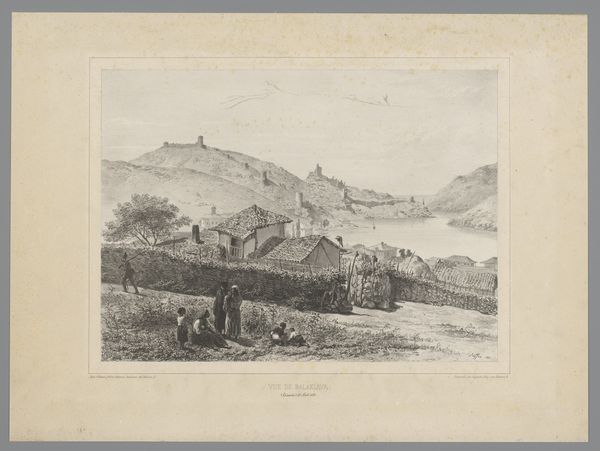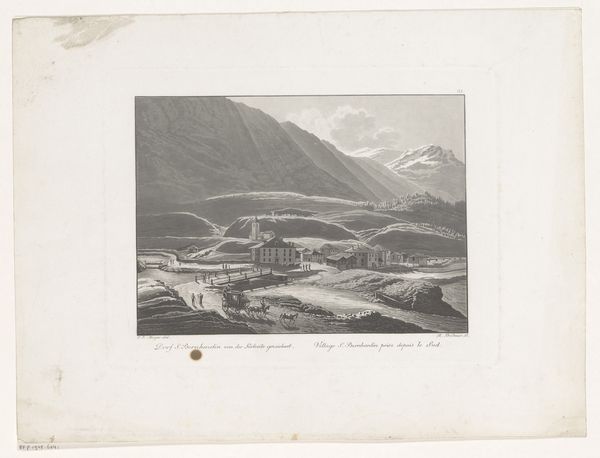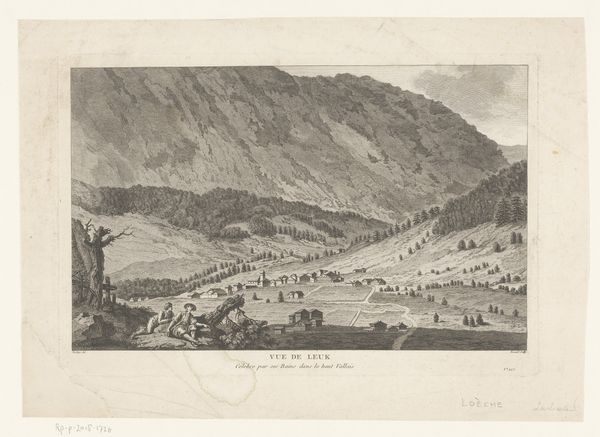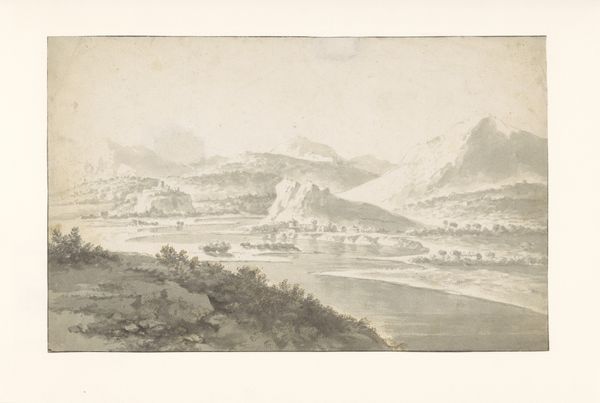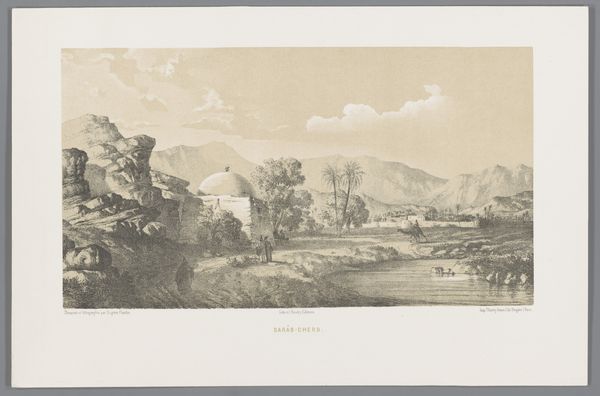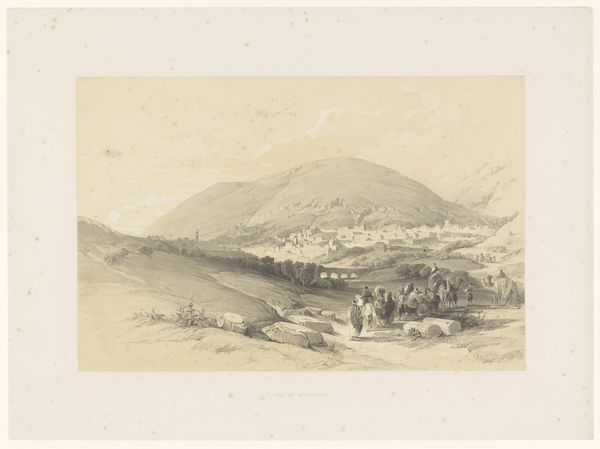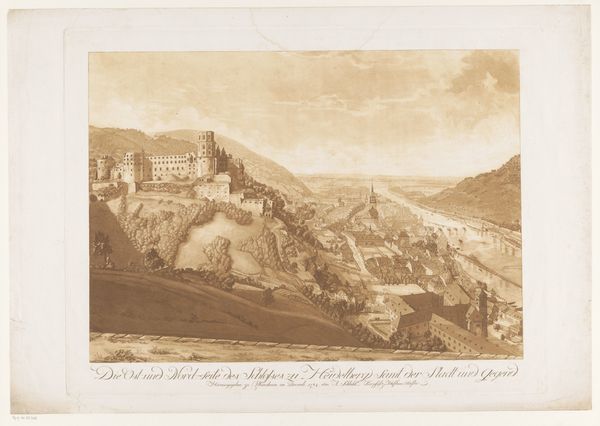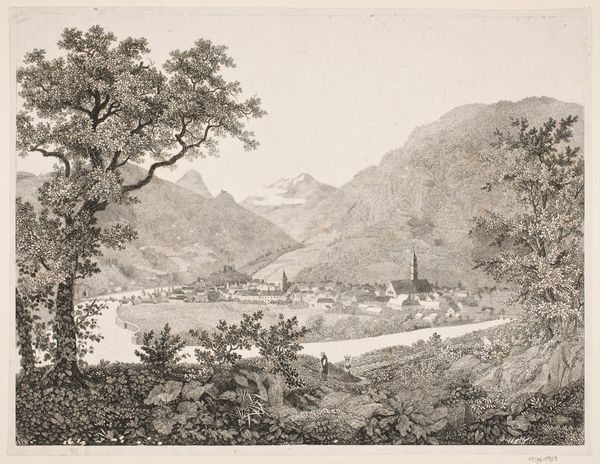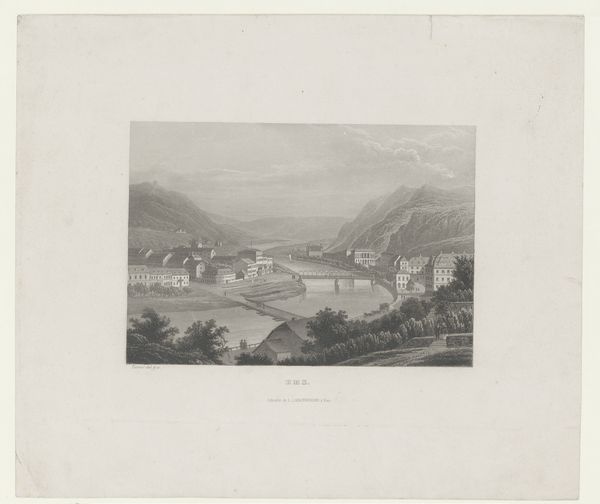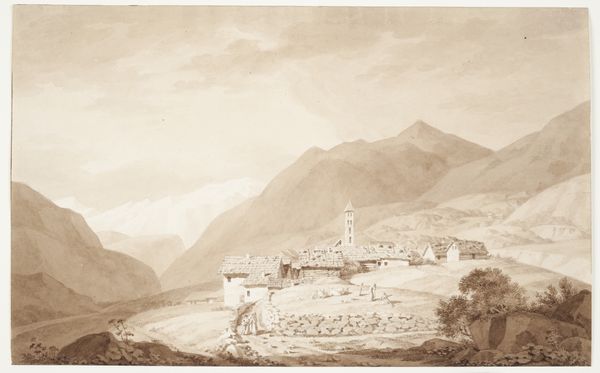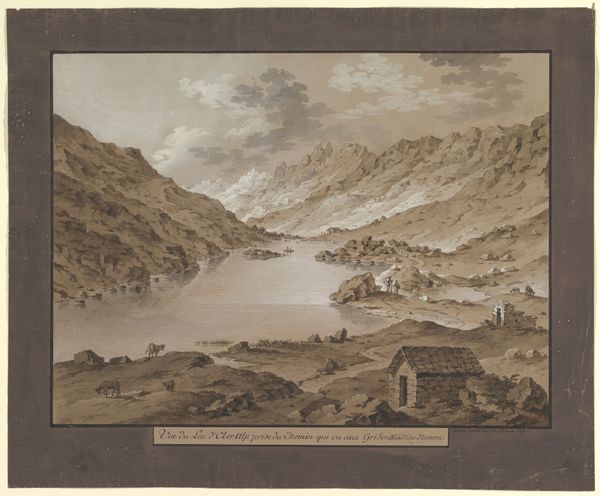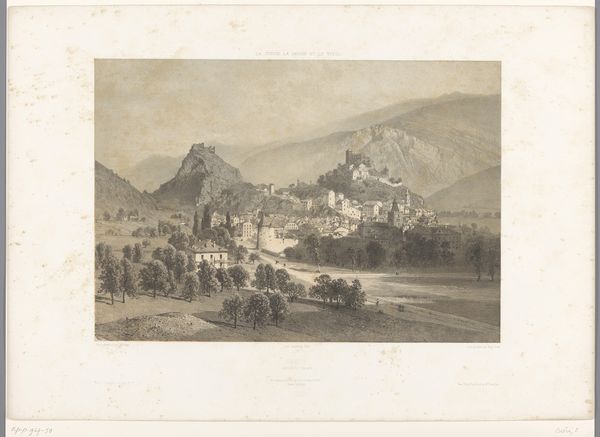
drawing, print, etching, pencil
#
drawing
# print
#
etching
#
pencil sketch
#
landscape
#
romanticism
#
pencil
#
cityscape
#
watercolour illustration
#
academic-art
#
watercolor
#
realism
Dimensions: height 445 mm, width 566 mm
Copyright: Rijks Museum: Open Domain
Curator: Before us, we have a remarkable etching by Théodore Achille Louis Dumoncel from 1847. It’s titled “Zicht op Chur in Graubünden,” a view of Chur in the Swiss canton of Graubünden. Editor: My first impression is one of peacefulness. The artist has captured the scene with such detail, yet the overall mood is tranquil, almost dreamlike. Curator: Yes, and I find it fascinating to consider this cityscape through the lens of Romanticism. We must examine its placement in the historical narrative and broader social changes occurring at the time of its making. Switzerland was still grappling with questions of national identity, caught between its traditional structures and emerging modernizing forces. The idyllic portrayal flattens social strata. What's absent speaks volumes about the intended audience and their worldview. Editor: Absolutely. It is more than just a realistic depiction; it presents a curated view of social stability. Beyond this aspect of social harmony, I also notice how the city is nestled into the landscape—the mountains loom in the background, which lends this print both an allegorical and grounded feeling. Perhaps Dumoncel intended to highlight a symbolic link between the city and the enduring, grounding power of the land and of nature. The etching method enhances the sense of precision and lasting value of Chur’s cultural memory. Curator: You touch on something crucial—how the medium of printmaking allows for wider dissemination. It's not merely about capturing the likeness of a place but shaping perceptions. Dumoncel's technical precision, as we note it today, speaks to the politics of representation. How does he choose to frame Chur? What does that reveal about the values he upholds, consciously or not? To analyze the politics within such portrayals and within his stylistic decisions makes this print much more accessible and revealing for a contemporary audience. Editor: Considering the date, I can also infer there's an element of national pride embedded in the depiction of Chur's landmarks. As someone encountering this view of Chur, I get the feeling of both historical value and geographical place. Curator: Precisely. By investigating these connections, this etching evolves beyond a simple depiction, which turns this 1847 piece into an insightful study into national construction, historical representation, and landscape art and ideology. Editor: And I find myself further reflecting on how enduring symbols and visual stories still inform us and continue influencing collective memory in today’s society.
Comments
No comments
Be the first to comment and join the conversation on the ultimate creative platform.
